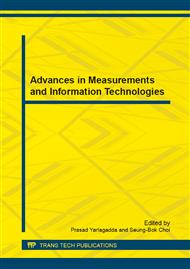p.522
p.526
p.530
p.534
p.540
p.544
p.550
p.554
p.561
Application of Wavelet Analysis in Denoising Seismic Data
Abstract:
The random noise is the kind of noise with wide frequency band in seismic data detected by the optical acceleration sensors. The noises influence and destroy the useful signal of the seismic information. There are a lot of methods to remove noise and one of the standard methods to remove the noise of the signal was the fast Fourier transform (FFT) which was the linear Fourier smoothing. In this paper, the novel denoising method based on wavelet analysis was introduced. The denoising results of seismic data with the noise with FFT method and wavelet analysis method, respectively. SNRs of the signal with noise, FFT denoisng and wavelet analysis denoising are-8.69, -1.13, and 8.27 respectively. The results show that the wavelet analysis method is prior to the traditional denoising method. The resolution of the seismic data improves.
Info:
Periodical:
Pages:
540-543
Citation:
Online since:
February 2014
Authors:
Keywords:
Price:
Сopyright:
© 2014 Trans Tech Publications Ltd. All Rights Reserved
Share:
Citation:


